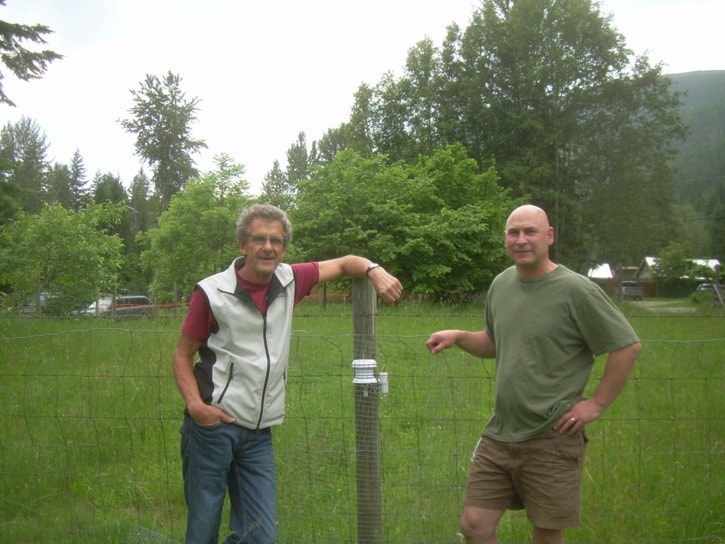The word on the grapevine is that would-be vintners will soon have valuable information at their fingertips in the Arrow Lakes region, thanks to an Arrow Lakes Grape Growers Society climate study taking root here.
Jody Scott works as a faller in the forest industry and operates Sunset Ridge bed-and-breakfast, where he first used grapevines as a landscaping feature.
He got interested in viticulture after doing some wine touring in B.C.’s interior. He started emailing wineries in the Shuswap asking for information about planting, and then went to school for three months to learn all he could about viticulture.
a climate study if he was serious about seeing viticulture take off in the area.
The Arrow Lakes Grape Growers Society project was organized accordingly among local growers. Big donors to the project have included the Columbia Basin Trust, RDCK and BC Hydro.
“This climate study that we’re doing is going to help farmers if they want to do something different than what they’ve been doing. It will give them a baseline of their growing season,” said Scott, who is co-chair of the ALGGS.
The information gathered in the study will be shared with the public and will be available online, he said.
The ALGGS climate study employs data loggers, tiny units that digitally measure temperatures.
The data loggers have been set up on parcels of land up and down the valley, most of them on properties that have demonstrated potential for agriculture but have either gone fallow or been used as hay meadows.
“Most of the farmers can’t make any money - it’s a pretty tough go of it,” he said.
They log the temperature every 12 minutes over the course of the day, 24-7-365.
The units will collect the information, which will be downloaded to laptop or shuttle, and the software will total the numbers.
“It will come up as a graph, and our software that we have will take an average of the high and the low of the day, converting it into ‘growing-degree days,’” he said.
A cumulative temperature of over 10 degree Celsius is the baseline for grapevine root development in a season that spans from April 1 to the end of October.
The study is expected to shed light on frost dates and extreme minimums, taking into consideration slope, elevation and aspect, providing a profile of the entire valley, from north of Nakusp to south of Edgewood.
Twenty units have been installed, and there are sites already established for an additional 15 units, with an additional five in the works.
The study is similar to studies underway in places like Lytton and Lilloet, as well as the Annapolis Valley of Nova Scotia.
“They do it in places when somebody wants to do a cash crop like this – it’s a pretty big investment initially and you don’t get any return for three years, so you want to know your climate,” he said.
Agricultural diversity that takes in the science of viticulture should be a good thing, he said.
“People have to have an open mind, especially in an area that has been hit so hard economically,” Scott said.
Currently he personally favors the early-ripening Siegerrebe grape, which appears to be dependable and winter-hardy. Another good one for the area seems to be the Foch grape, Scott said.
Local farmer Joel Henschke is part of the Arrow Lakes Grapes Growers Society’s climate study.
“It will be two to three years before usable information is collected,” says Henschke.
The association is interested in finding grapes resistant susceptible to mold and mildew, a real challenge to viticulture in the humid Kootenay region.
Henschke runs a diversified farm that has different crops demanding work at different times of the year. That way, he doesn’t have to spend a lot of money on equipment or hiring labourers, he said.
He planted 40 Gewürztraminer vines this year, a grape ideal for ice wine. He plans on selling grapes for the first few years, but eventually transitioning into a winery in the long run.
“I already make wine,” he said. “Now I just have to get really good at it.”
